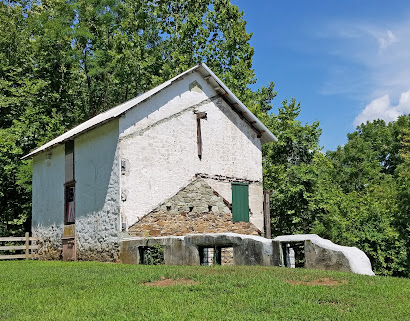While following the Kennett Square Underground Railroad Self-guided Tour, we stopped at several other historic sites along the way.
Pennsbury Township, PA:
 |
| 1301 Brintons Bridge Rd/Brinton-King Farmstead (originally built c 1780, extensive modifications were made in 1889 in Queen Anne style) |
 |
| 162 Baltimore Pike/Brinton-King Farmstead Stone-and-frame Bank Barn |
 |
| 883 Baltimore Pike/Former Pennsbury Inn (1789) was also known as Lancaster Inn and Hal-Dell Farm, now a multiple family residence |
 |
| 128 S Willow St/Harry Hicks Building (1895) was the first purpose-built mushroom house in Kennett Square |
 |
| 309 Marshall St/William Swayne House (1882) belonged to a florist who brought spores from England to grow mushrooms under the benches in his carnation greenhouses |
 |
| 106 Lincoln St/Lois & Edgar Cleaver House (1924, in Arts & Crafts style) |
 |
| Gatehouse Dr/Cedarcroft or Bayard Taylor House (1859, in Italianate style) |
In 1904, the house became a boarding school for boys, one of whom was the future professional baseball player Herb Pennock.
West Chester, PA:
Now we follow in the footsteps of British troops under General Cornwallis, heading south on Birmingham Road, towards the September 11, 1777 Battle of Brandywine, during the American Revolution.
The monument commemorates the Marquis de Lafayette and Casimir Count Pulaski, both of whom had their first American battle experience here.
Note the stone wall behind the monument that separates the cemetery from the Birmingham Friends Meetinghouse. The American troops used the wall as a defensive position.
The Birmingham Friends Meeting also experienced the split between conservatives and liberal Hicksites. Here the conservatives built a meetinghouse nearly across the street.
 |
| Strodes Barn (1875) was the former home of the Strode’s Sausage and Scrapple Plant |
 |
| Strodes Mill/Entriken Mill (1721) was a grist mill |
 |
| Birmingham Lafayette Cemetery with the Lafayette and Pulaski Monument (1900) |
 |
| Colonel Isaac Taylor Monument (1898); Taylor led the defense of Chadds Ford during the Battle of Brandywine |
 |
| Joseph McClellan Monument (1895); McClellan served under General Anthony Wayne during the Battle of Brandywine |
 |
| 1245 Birmingham Rd/Octagon Schoolhouse (1819) |
 |
| 1245 Birmingham Rd/Birmingham Friends Meetinghouse (1763) was used as a hospital during the Battle of Brandywine |
 |
| 1270 Birmingham Rd/Orthodox Meetinghouse (1845) |
 |
| 21 Oakland Rd/Brinton 1704 House is an example of an early Delaware Valley stone house; it was one of 14 houses in the midst of the Battle of Brandywine |
 |
| Brinton 1704 House and a double outhouse |
 |
| Dairy Barn (early 20C) at the Brinton 1704 House |
 |
| Carriage House at the Brinton 1704 House |

No comments:
Post a Comment